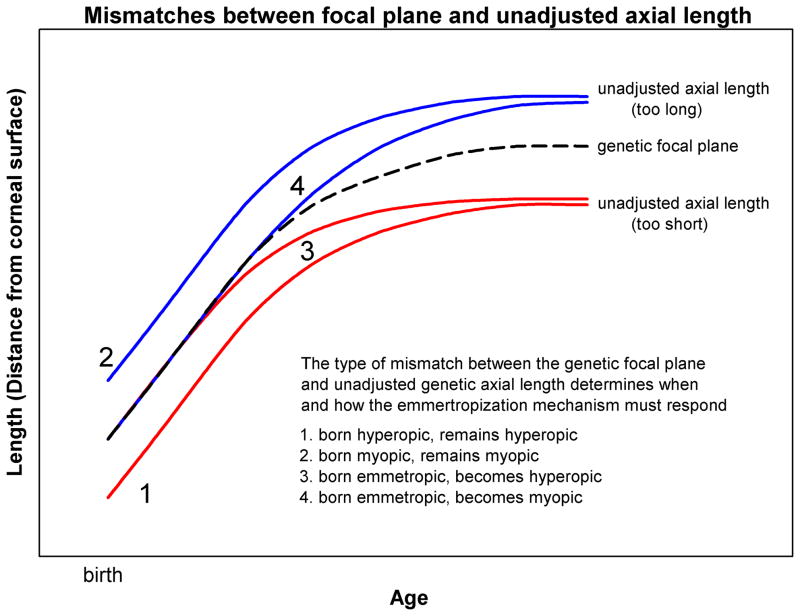Figure 2.
Hypothetical postnatal growth of the focal plane modeled as the log of age (dashed line) and four of the many possible growth patterns for the genetically-guided, unadjusted axial length. “1” and “2” depict unadjusted axial growth that is parallel to the focal plane, but either shorter or longer starting at birth so that, without an emmetropization mechanism, the eyes would remain either hyperopic (“1”) or myopic (“2”). “3” and “4” depict unadjusted axial growth that initially is the same as the focal plane, but diverges later in the postnatal period, creating eyes that would become either hyperopic (“3) or myopic (“4”).

